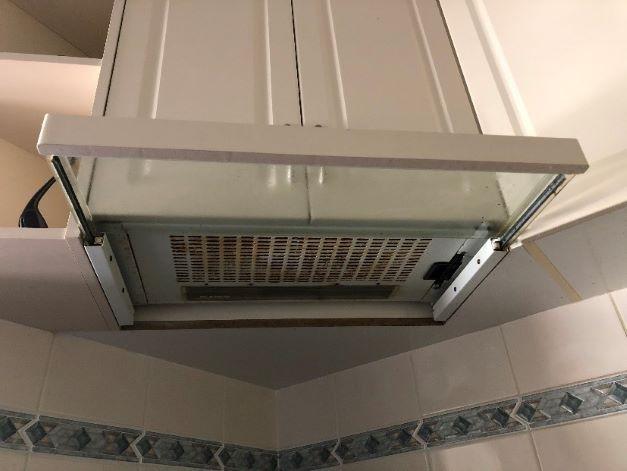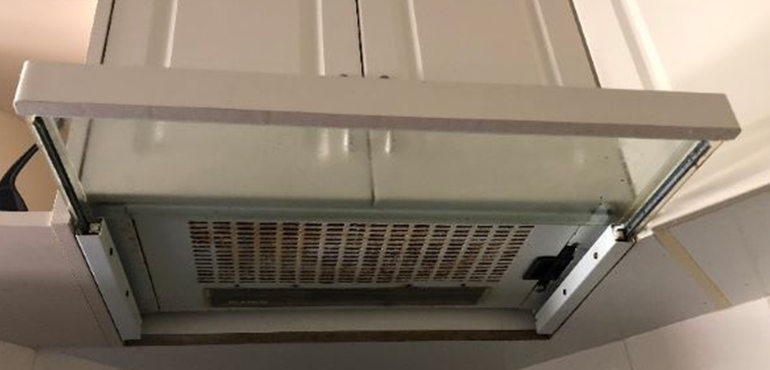A common question builders ask is: What are the venting requirements for domestic kitchen range hoods in Class 1 buildings? In this article, we will inform readers of the purpose and installation requirements of such range hoods and some important issues for consideration.

A typical range hood found in a residential dwelling.
What is the purpose of a range hood?
Range Hoods are primarily installed in a residential dwelling to improve the air quality in a kitchen by capturing and/or discharging things such as water vapour, odours, smoke, grease and other potential pollutants emanating from the use of a cooktop.
Without a functioning range hood, the discharges mentioned above can spread widely throughout the kitchen and adjoining rooms, resulting in a thin layer of difficult-to-remove grime deposited onto a range of surfaces.
How does a range hood work?
Range hoods generally work on the principle of an electric exhaust fan being located above the cooktop that extracts fumes and pollutants from the cooking area. This is via a filter membrane that catches vapours containing grease and oils. Once filtered, the air is either recirculated back into the kitchen area or discharged to an external air-space.
Building Code requirements
The Building Code of Australia (BCA) contains no specific mandatory requirement that range hoods need to be installed in a Class 1 building.
What the BCA does require as an acceptable construction practice, is that natural ventilation is provided to any room being occupied by a person. Such natural ventilation can be provided via openable windows, doors or other devices of prescribed sizes relative to the room's floor area.
In circumstances where a window, door or another device cannot be located in a kitchen, the BCA also allows the borrowing of natural ventilation from adjoining rooms.
Installation requirements
Range hoods need to be installed in strict accordance with the product manufacturer's instructions. A determination should be made when entering into a building contract (via the specifications) regarding whether a recirculating or exhaust type range hood installation is required.
Clearly, in cases where a client requires the range hood to be exhausting to outside air, additional costs will be incurred in material, installation costs for ducting, outlets, etc. Some range hoods may even require a more powerful motor to exhaust to a remote location.
Where to exhaust
Building contractors need to liaise with their clients and relevant suppliers/installers of the kitchen cabinetry and equipment to ensure that the range hood's location will allow for external exhaust if required by the client.
The most practical location to exhaust to outside air would be as close as possible to the range hood itself so that adequate venting can be achieved from the units fan motor. However, that may not always be practical so careful consideration of the exhaust outlet location is essential.
The practice of venting a range hood exhaust into a ceiling space or wall cavity is not sound. Over time, pollutants such as grease and oil can build up creating a fire hazard along with associated odours and potential damage to insulation and the like.
Maintenance
The cleaning or replacement of filters in range hoods is arguably one of the most overlooked pieces of routine maintenance required around a domestic dwelling.
If filters are not cleaned or replaced regularly, the range hood's efficiency will be degraded, and filters that are choked with flammable greases or oils become a potential high fire source risk.
Further considerations
Whilst we have only discussed the issues surrounding range hoods in Class 1 buildings, building contractors are reminded that in other building classes, special requirements apply to range hood installations and the Australian Standard AS 1668.2 - Mechanical ventilation in buildings is referenced by the BCA to ensure a compliant range hood installation standard.
